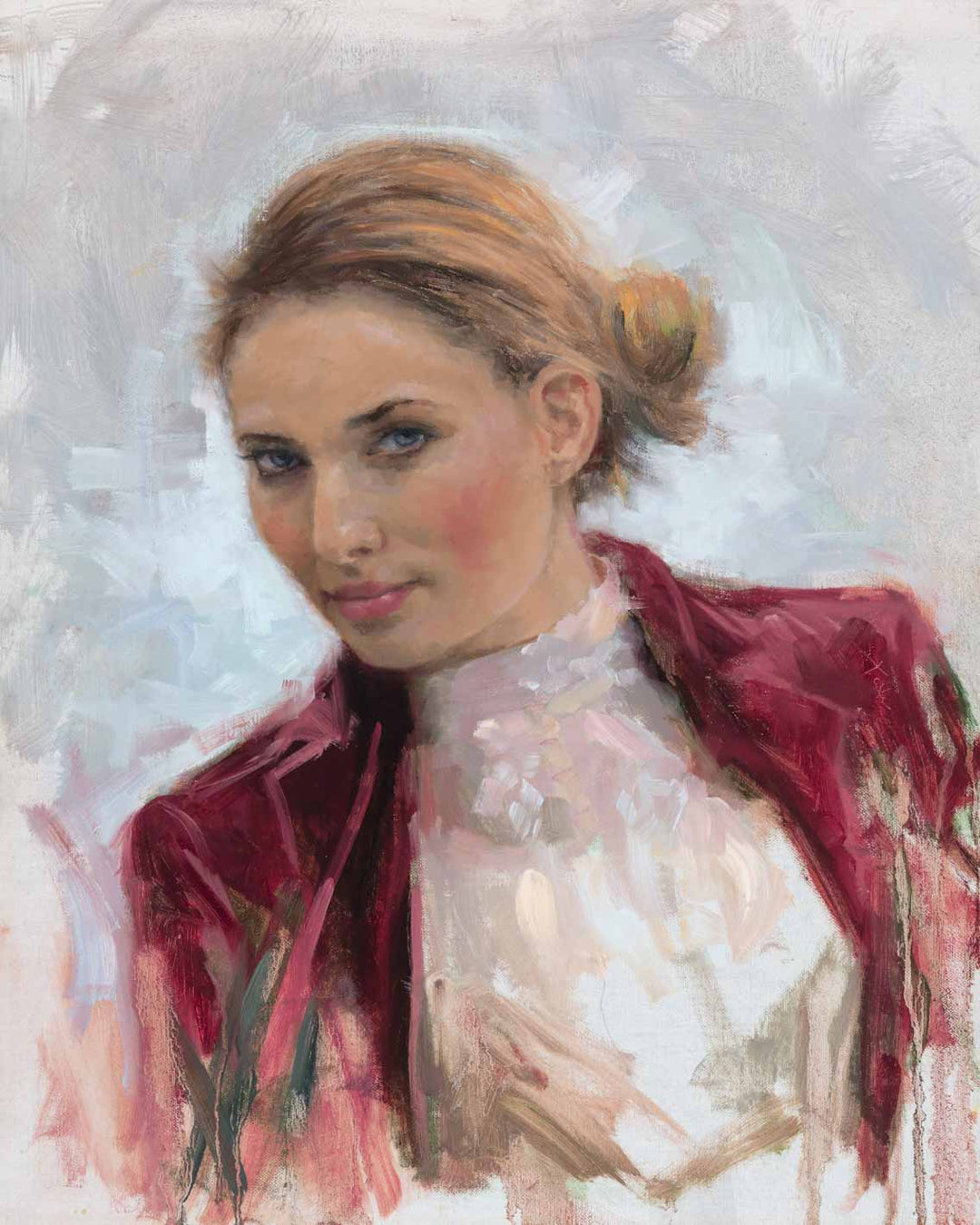Explore Classic Fine Art Oil Paintings for Sale Today
Wiki Article
Discovering Everything About Oil Paintings: An Overview to Comprehending Their Appeal and Value
Oil paints have actually captivated audiences for centuries, offering a look into the artistic proficiency of various periods. Their rich history is linked with ingenious strategies and extensive psychological expression. Recognizing the materials and methods behind these art work can improve admiration. Furthermore, the marketplace for oil paints provides chances for capitalists and collection agencies alike. As one discovers this remarkable globe, the inquiry arises: what makes an oil painting really beneficial?The Background of Oil Painting: A Trip Through Time
Although oil painting has origins that go back to ancient times, it really thrived throughout the Renaissance, when artists found its adaptability and rich shade potential. Early instances can be mapped to the 7th century, with strategies progressing significantly across societies. The tool became famous in Northern Europe in the 15th century, especially with the jobs of musicians like Jan van Eyck, who spearheaded its usage for thorough realism and dynamic tones. This period marked a separation from tempera paints, allowing for higher depth and structure. As oil painting spread, it influenced countless artists, causing work of arts by prominent figures such as Leonardo da Vinci and Rembrandt. The medium's tradition proceeds, forming the art globe well right into modern-day times.Recognizing Oil Repaints: Products and Techniques
As artists check out the globe of oil paints, they run into a varied selection of materials and methods that specify this medium. The key parts of oil paint consist of pigments, which supply color, and drying oils, such as linseed, that bind the pigments and facilitate application. Different ingredients can modify the paint's texture and drying time, boosting flexibility. Methods like glazing, where clear layers are accumulated, and impasto, which includes using thick paint, allow for various visual impacts. In addition, making use of brushes, scheme blades, and even fingers can produce distinct textures and coatings. Comprehending these products and methods makes it possible for artists to completely share their creativity and accomplish the desired impact in their art work.The Function of Shade in Oil Paintings
Shade plays an essential duty in oil paints, affecting both aesthetic appeal and psychological resonance. Understanding shade concept basics, consisting of the connections between tones, can enhance an artist's ability to convey state of mind and ambience. Furthermore, understanding color mixing methods enables for better deepness and richness in a painting's scheme.

Shade Concept Fundamentals
Comprehending shade concept is crucial for musicians dealing with oil paints, as it forms the structure for producing harmonious and aesthetically appealing structures. Shade theory incorporates the research of just how colors communicate, the color wheel, and the partnerships between primary, secondary, and tertiary shades. Artists make use of complementary shades to enhance contrasts and develop focal factors, while analogous shades promote unity and cohesiveness within a piece. In addition, the ideas of awesome and cozy colors affect the perception of deepness and space in a painting. Grasping these concepts permits musicians to adjust color efficiently, guiding the visitor's eye and interacting their intended message. Mastery of color concept eventually enriches an artist's capacity to convey emotions and concepts via their work.
Psychological Impact of Color
The psychological effect of shade in oil paintings plays an important duty in exactly how viewers attach and perceive with artwork. Shades stimulate specific sensations and state of minds, influencing the viewer's emotional state. Warm shades like reds and oranges can produce a feeling of heat and power, while cool tones such as blues and greens frequently evoke calmness or introspection. Artists tactically select shade combinations to improve narrative components, guiding the audience's emotional trip. The saturation and comparison of shades further enhance these impacts, attracting focus and creating emphasis. Ultimately, the interplay of colors in oil paints not just boosts their visual charm yet additionally acts as a powerful medium for emotional expression, enhancing the customer's experience and interpretation.Color Mixing Techniques
While several facets of oil painting contribute to the general make-up, understanding shade blending methods is crucial for attaining wanted results and deepness. Color mixing can be approached through numerous techniques, including the subtractive and additive procedures. Additive mixing entails incorporating colors of light, while subtractive blending depends on pigments, where colors mix to produce new tones. Musicians commonly use a restricted palette to create unified jobs, comprehending the relationships in between key, second, and tertiary colors. Techniques such as glazing and scumbling further boost deepness and luminosity. By skillfully mixing shades, an artist can evoke emotions, develop centerpieces, and accomplish a sense of realism, inevitably raising the paint's aesthetic and psychological effect.Famous Oil Painters and Their Iconic Works

Well known for their mastery of shade and strategy, oil painters have actually created some of the most renowned art work in background. Prominent artists like Vincent van Gogh captivated audiences with his stirring brushwork in "Starry Evening," while Claude Monet's "Perception, Sunrise" prepared for Impressionism. Leonardo da Vinci's "Mona Lisa" continues to be an enduring sign of imaginative genius, showcasing his skill in capturing human expression. At the same time, Rembrandt's "The Evening Watch" highlights his cutting-edge use light and darkness. Other significant numbers include Pablo Picasso, who transformed modern-day art with his vibrant experimentation in works like "Les Demoiselles d'Avignon," and Georgia O'Keeffe, whose dynamic representations of blossoms and landscapes aided specify American innovation. Each musician's unique style contributed considerably to the oil paint landscape.
Exactly how to Review the Top Quality of an Oil Painting
Assessing the top quality of an oil painting entails a mindful evaluation of craftsmanship techniques, along with an analysis of color and structure. Observing brushwork, layering, and the application of paint can reveal the musician's skill degree. In addition, the interaction of shades and the general plan of elements contribute considerably to the paint's aesthetic worth.Assessing Workmanship Techniques
A thorough assessment of craftsmanship techniques is necessary for establishing the quality of an oil painting. Evaluators ought to initially analyze the application of paint; thick, textured brushstrokes might recommend a knowledgeable hand, while overly consistent applications could indicate a lack of depth. oil paintings for sale. The layering technique is additionally vital; the existence of glazes and differed thickness can enhance brightness and intricacy. Furthermore, the high quality of the products made use of, such as the canvas and pigments, plays a substantial role in durability and overall aesthetic. Attention to detail in elements like edges and shifts in between shades mirrors the artist's commitment to their craft. Inevitably, these strategies contribute to the painting's emotional effect and market price, serving as signs of the artist's ability and intentExamining Color and Make-up
While reviewing the top quality of an oil paint, one should focus on the interaction of shade and structure, as these components are essential to the art work's general influence. Color options can evoke feelings and develop mood; for that reason, the artist's palette need to be checked out for harmony and more info comparison. A well-balanced composition routes the visitor's eye and produces a feeling of unity. Artists frequently use methods like the regulation of thirds or leading lines to boost aesthetic passion. In addition, using light and darkness can add deepness, boosting the three-dimensionality of the paint. Eventually, a successful oil painting weds color and composition, engaging the customer and welcoming a deeper recognition of the artist's vision and strategy.Taking care of and Preserving Oil Paintings
Proper care and conservation of oil paints is essential for preserving their integrity and long life. To safeguard these artworks, it is essential to present them away from straight sunlight, which can cause fading and staining. Preserving a steady setting with controlled temperature and humidity more aids in protecting against damages. Cleaning up should be done carefully using a soft, dry cloth, staying clear of any harsh chemicals that could damage the paint or varnish. Regular examinations for indicators of wear and tear, such as flaking or cracking, are recommended. When carrying or keeping oil paintings, appropriate cushioning and framework are necessary to prevent physical harm. Ultimately, attentive care adds to the visual allure and value of oil paints over time.The Market for Oil Paints: Spending and collecting
Recognizing the market characteristics for oil paints is essential for collection agencies and investors alike. The worth of these artworks is affected by numerous elements, consisting of the artist's track record, historical relevance, and existing trends. Collection agencies often seek pieces that reverberate directly while thinking about potential recognition in worth. Galleries and auctions act as key locations for buying and selling, with prices changing based on need and rarity. Buying oil paintings needs research into the market, in addition to an understanding of credibility and provenance. In addition, arising musicians may offer chances for considerable returns, while developed names can regulate high costs. Generally, a strategic method to accumulating can yield both aesthetic satisfaction and financial benefits.
Frequently Asked Concerns
What Are the Ecological Impacts of Oil Painting Materials?
The environmental effects of oil paint products include the release of volatile organic compounds (VOCs), dangerous waste generation, and source removal for pigments. These factors add to pollution and ecological deterioration, raising worries among ecologically conscious artists and customers.How Do Various Canvases Affect Oil Painting Outcomes?
Different canvases affect oil paint results significantly. Texture, absorbency, and surface quality can change paint application, drying out times, and color vibrancy. Artists typically select certain canvases to attain wanted impacts and improve their imaginative expression.Can Oil Paintings Be Restored if Damaged?
If harmed, Oil paints can indeed be brought back. Professional conservators make use of different methods to repair rips, tidy surfaces, and address discoloration, guaranteeing that the artwork preserves its initial charm and value for future generations.What Are the Indicators of an Initial Oil Painting?
The indicators of an initial oil painting consist of visible brush strokes, texture variants, and an irregular canvas weave (oil paintings for sale). Furthermore, authenticity might be verified through provenance, trademarks, and the existence of a varnish layer unique to oil toolsExactly How Has Innovation Influenced Modern Oil Paint Techniques?
Innovation has significantly influenced contemporary oil painting strategies by introducing digital devices for preparation, improved products for structure and longevity, and on-line platforms for sharing and marketing art, therefore broadening musicians' creative opportunities and audience reach. Oil paint has roots that date back to old times, it really prospered during the Renaissance, when musicians uncovered its convenience and abundant color potential. The psychological effect of color in oil paintings plays a vital function in exactly how audiences perceive and attach with artwork. While several elements of oil painting contribute to the general make-up, mastering color blending techniques is crucial for achieving wanted effects and depth. Examining the top quality of an oil painting involves a cautious analysis of workmanship strategies, as well as an analysis of color and composition. While examining the top quality of an oil paint, one must focus on the interplay of shade and structure, as these aspects are basic to the artwork's general effect.Report this wiki page